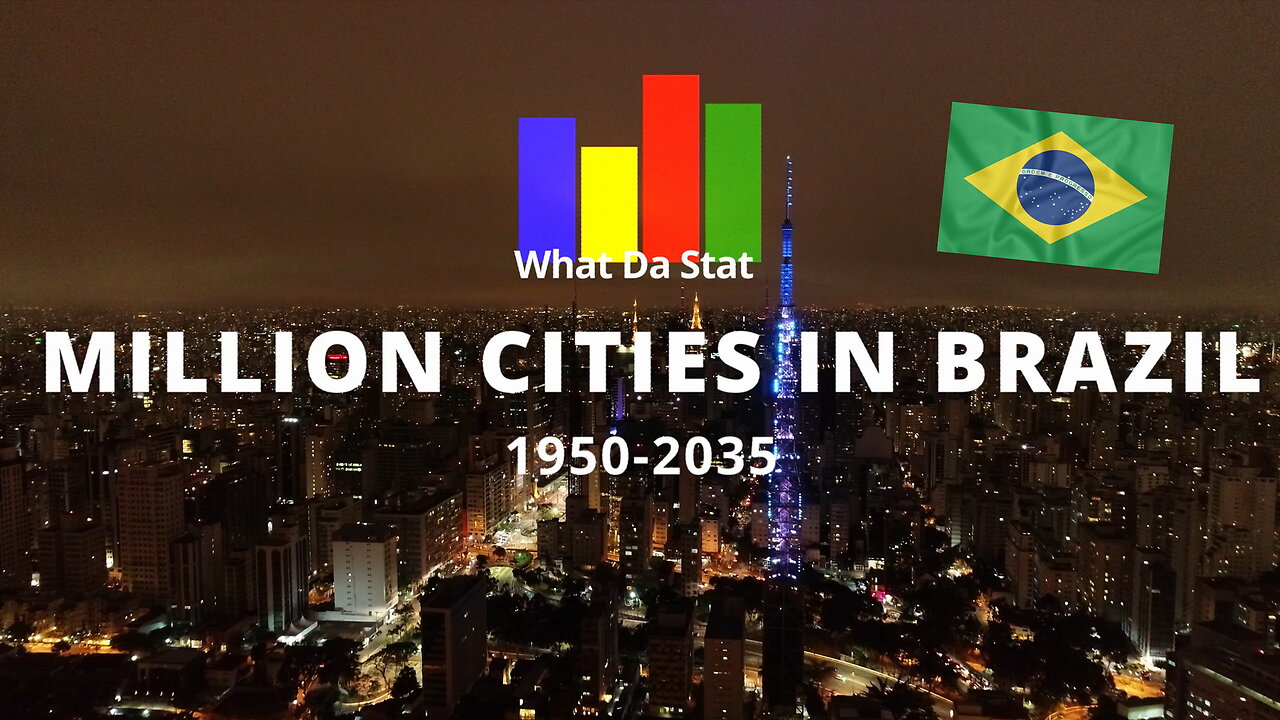Premium Only Content

Million Cities in Brazil 1950-2035
This bar chart race shows urban agglomerations in Brazil with over one million urban population, and urbanization in percentage and total urban population, from 1950 to projected in 2035.
City flags are depicted.
Since 1950, Brazil has undergone significant urbanization, characterized by rapid growth in the number and size of its urban agglomerations, particularly those with populations exceeding one million (million+ urban agglomerations).
1950s: Brazil's urbanization began to accelerate, driven by industrialization, economic opportunities in cities, and rural-to-urban migration. At this time, only a few cities, such as São Paulo and Rio de Janeiro, had populations over one million.
1960s-1970s: The urban population grew dramatically. By 1970, Brazil's urban population exceeded its rural population for the first time. Major cities like Belo Horizonte, Salvador, and Porto Alegre joined the ranks of million+ agglomerations.
1980s-1990s: Continued economic development and urban migration led to more cities surpassing the one million mark. The rise of new industrial centers and expanded metropolitan areas played a significant role.
2000s-Present: The trend of urban expansion continued, with cities like Brasília, Curitiba, and Manaus experiencing significant population growth. Urban sprawl and the development of metropolitan regions have become prominent.
Data sources and projections: World Bank and UN
Data visualization created with flourish.studio https://flourish.studio
-
 LIVE
LIVE
LFA TV
8 hours agoBanning Mystery of the Ages | TRUMPET DAILY 1.17.25 7pm
318 watching -
 LIVE
LIVE
2 MIKES LIVE
1 hour ago2 MIKES LIVE #168 Open Mike Friday!
138 watching -
 LIVE
LIVE
Sarah Westall
2 hours agoMysterious Fog and California Wildfires Both Contain Dangerous Elements w/ Dr Robert Young & Hazen
583 watching -
 LIVE
LIVE
Mally_Mouse
1 hour agoLet's Play!! -- Stardew Valley pt. 23!
192 watching -
 16:21
16:21
China Uncensored
4 hours agoCan Anything Stop the Tiktok Ban?
18.4K5 -
 7:08
7:08
Guns & Gadgets 2nd Amendment News
9 hours agoTruckers Fight For National Reciprocity
13.1K7 -
 1:30:22
1:30:22
InfiniteWaters(DivingDeep)
11 hours ago7 MOST USEFUL MANIFESTATION LIFE HACKS EVER!
3.02K1 -
 47:17
47:17
PMG
2 hours ago $0.02 earnedHannah Faulkner and Julie Behling | Beneath Sheep's Clothing
1.42K -
 38:35
38:35
CharLee Simons Presents Do Not Talk
1 day agoDO NOT TALK with SAM ANTHONY (YourNews.com) Zuckerberg vs. Anthony!
9192 -
 3:46:49
3:46:49
Scammer Payback
5 hours agoCalling Scammers Live
29.3K6